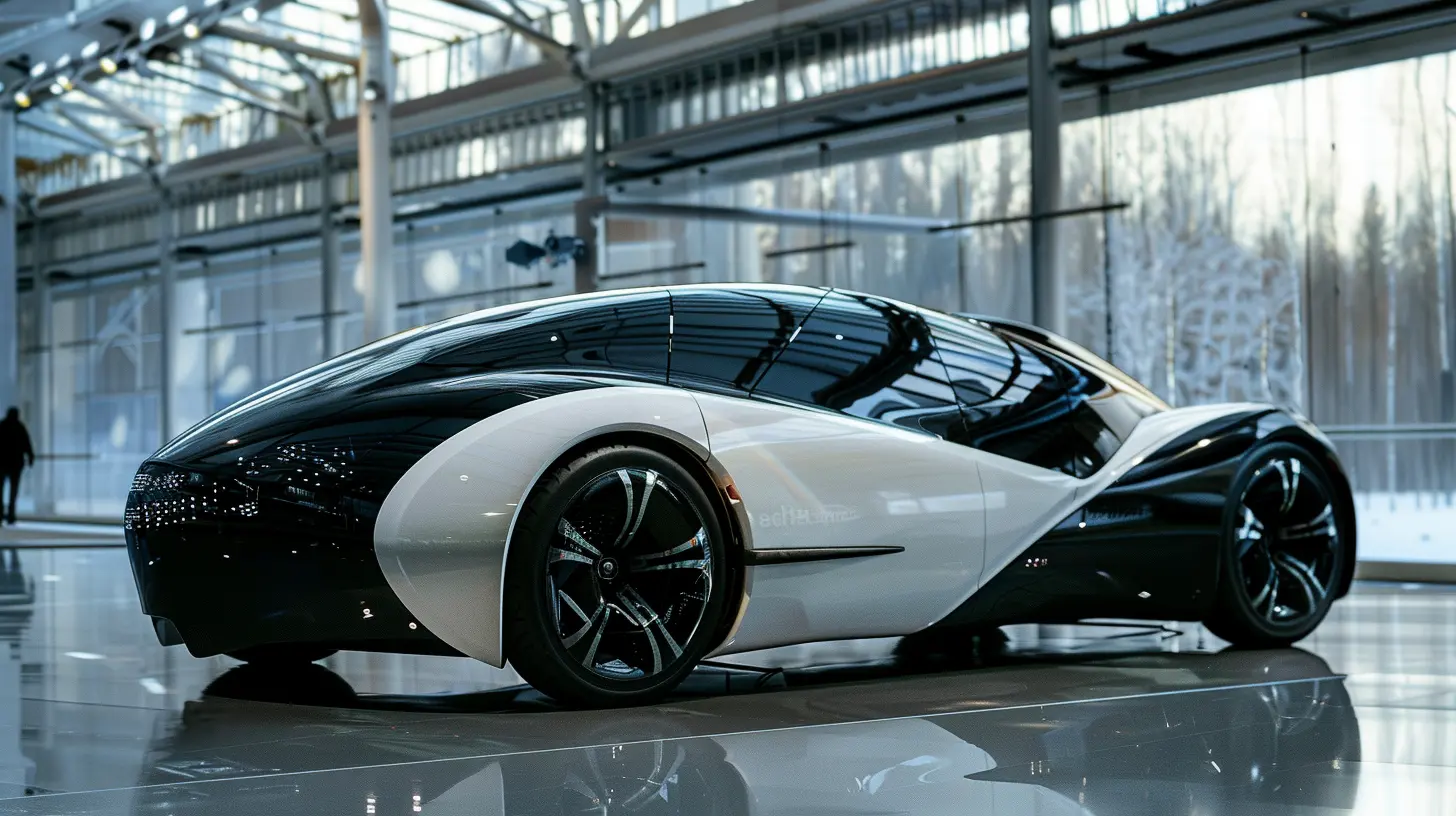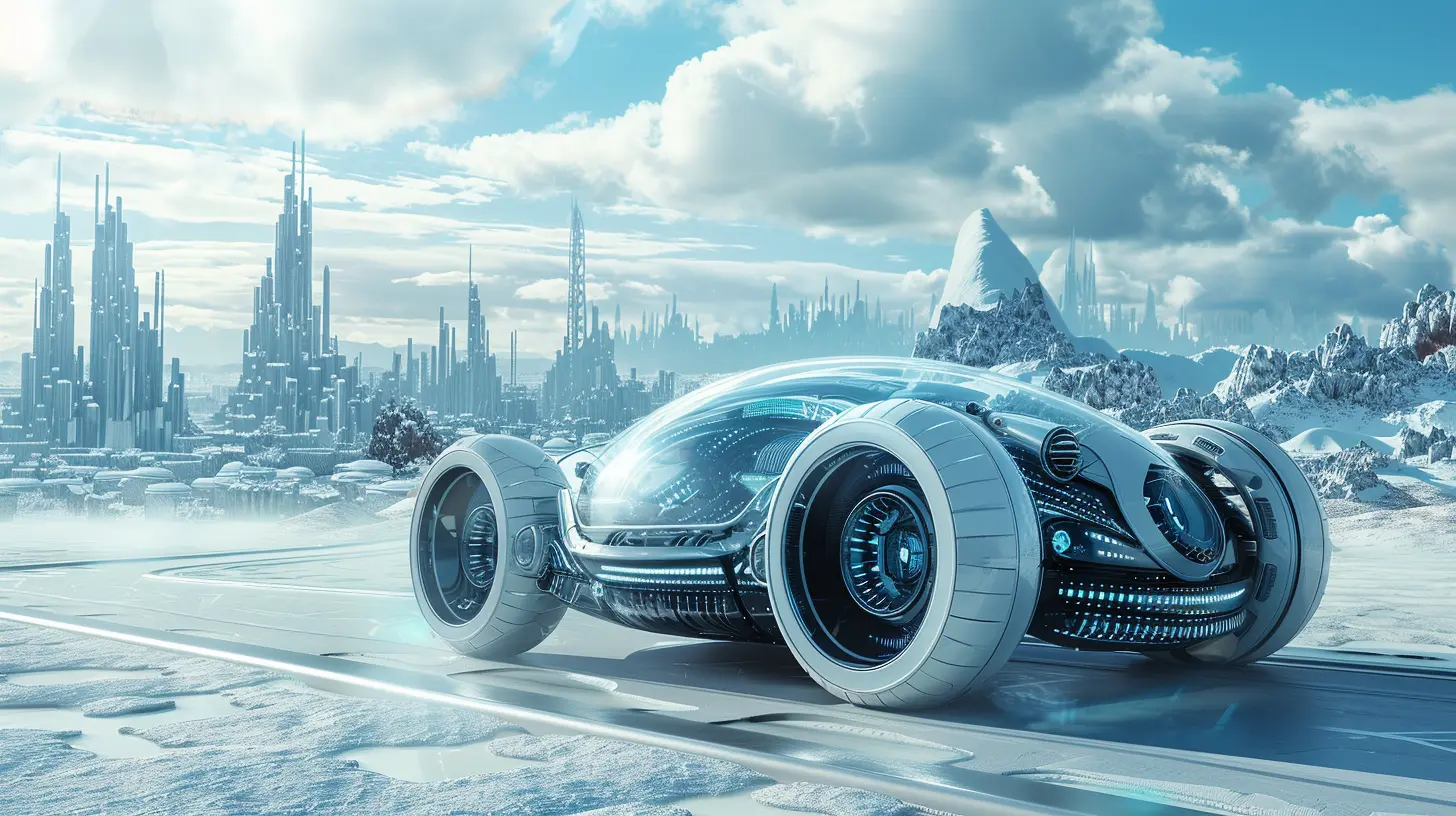Hydrogen-Powered Vehicles: The Next Leap in Sustainable Transport
11 June 2025
When most of us think of green transportation, the first thing that jumps to mind is usually electric vehicles (EVs), right? Tesla this, lithium battery that… But there's another player in the race toward sustainable transport, and it's been hiding in plain sight: hydrogen-powered vehicles. These aren't just science fair experiments or futuristic prototypes anymore—they're real, they're here, and they might just be our next big move toward cleaner roads.
So buckle up, because we’re diving deep into hydrogen-powered vehicles, how they work, what makes them exciting (and yes, some of the headaches too), and why they might just be the missing piece in our electric dreams.
What Are Hydrogen-Powered Vehicles, Anyway?
Let's start with the basics. Hydrogen-powered vehicles, also known as fuel cell electric vehicles (FCEVs), use hydrogen gas to generate electricity. No bulky battery packs here. Instead, these cars turn hydrogen into energy by mixing it with oxygen in a fuel cell. The result? Electricity to power the car, and water vapor as the only byproduct.Sounds like magic, doesn’t it? But it’s actually solid science. It’s a clean cycle that sidesteps a lot of the issues we’re seeing with battery-powered EVs.
How Do Fuel Cells Work?
Think of a fuel cell as a mini power plant packed inside a car. Here’s the short version: hydrogen gas is fed into the fuel cell where it meets oxygen from the air. A chemical reaction splits the hydrogen atoms into protons and electrons. The electrons generate electricity, powering the motor. The protons meet up with oxygen to form water vapor, which exits out the tailpipe.So, no carbon emissions, no dirty exhaust—just clean energy and water droplets.
Why Hydrogen? What’s the Big Deal?
Alright, let’s talk about why hydrogen deserves a spot on the green tech podium.1. Quick Refueling
We’ve all been there—spending 40 minutes at a charging station while your EV drinks up juice. Hydrogen refuels like gasoline. You pull up to a pump, fuel up in 3–5 minutes, and you’re back on the road. Boom.2. Longer Range
Hydrogen-powered cars go the distance. We’re talking 300 to 400 miles on a full tank—often more than their battery-powered cousins.3. Lighter Load
Fuel cells don’t require massive lithium battery packs, which means less weight and more room. That’s a big win for bigger vehicles like buses and trucks, which are perfect candidates for hydrogen.4. Clean As a Whistle
Zero tailpipe emissions. Nada. Zilch. The only emission is water vapor. Combine that with green hydrogen production (more on that later), and you’ve got a ride that’s squeaky clean from start to finish.
EVs vs. Hydrogen Cars — The Showdown
Here’s where things get fun. Let’s compare hydrogen cars with traditional battery electric vehicles (BEVs).| Feature | Hydrogen (FCEV) | Battery Electric (BEV) |
|--------------------------|------------------------|-----------------------------|
| Refueling Time | 3–5 minutes | 30 min to several hours |
| Range | 300–400+ miles | 200–350 miles |
| Emissions | Water vapor only | Zero tailpipe, but battery production emits CO₂ |
| Weight | Lighter | Heavier due to batteries |
| Infrastructure | Limited | Widespread and growing |
| Maintenance | Fewer moving parts | Fewer moving parts |
So, both are clearly evolving, but hydrogen vehicles offer some serious perks—especially in areas where fast refueling and long range are essential.
The Real-World Players: Who’s Actually Making Hydrogen Cars?
Yup, they're not just lab experiments. Automakers are already rolling these out.- Toyota Mirai – One of the first mass-produced hydrogen cars. Smooth ride, 402 miles of range, and it's gorgeous too.
- Hyundai NEXO – Stylish SUV vibes with advanced tech and decent range.
- Honda Clarity Fuel Cell – A solid player in the hydrogen game, though with limited availability.
Heavy industries are getting in too. Companies like Nikola, Hyundai, and Toyota are working on hydrogen-powered trucks and buses, especially for routes where EVs just aren’t practical.
Hydrogen Fuel: Where Does It Come From?
Okay, it’s great to drive on hydrogen, but where does this gas actually come from, and how clean is it?There are three types of hydrogen:
1. Gray Hydrogen – Made from fossil fuels. Cheap but dirty.
2. Blue Hydrogen – Also made from fossil fuels, but the CO₂ gets captured and stored.
3. Green Hydrogen – This is the superhero of the trio. It’s generated using renewable sources like solar and wind through electrolysis (splitting water into hydrogen and oxygen). Totally clean, no emissions.
Right now, most hydrogen is still gray—but that’s changing fast. Investments in green hydrogen tech are skyrocketing.The Infrastructure Problem: Where Do You Refuel?
Honestly? This is the Achilles' heel for hydrogen cars right now.There aren’t many hydrogen refueling stations—especially outside of California, Japan, or parts of Europe. Building these stations costs a lot and takes time. It’s a chicken-and-egg situation: no stations mean fewer buyers; fewer buyers means less motivation to build stations.
Still, progress is happening. Governments and private companies are throwing serious money at expanding hydrogen networks.
The Price Tag: Are Hydrogen Cars Affordable?
Currently, hydrogen cars can be pricey. You’re looking at $50,000+ for a Toyota Mirai or Hyundai NEXO. But here’s the kicker—manufacturers often offer sweet lease deals, free hydrogen for a few years, and tax credits.As production scales, prices are expected to drop. Just like with EVs, early adopters pay more, but the next wave will benefit from better affordability.
Hydrogen in Commercial and Heavy Transport
While passenger cars are important, hydrogen’s really heating up in the heavy transport sector.Buses
Hydrogen buses are already running in cities like London and Los Angeles. They’re quiet, clean, and perfect for long urban routes.Trucks
Long-haul trucking is where hydrogen really starts to shine. Fast refueling, long range, and no emissions make it ideal for cross-country freight.Trains and Planes
Yes, even trains and airplanes are testing hydrogen. Companies like Alstom (trains) and Airbus (planes) are betting big on hydrogen tech for the future.Is Hydrogen Really Sustainable?
It can be—if it’s green. If we’re producing hydrogen using wind and solar, then yes, hydrogen is an incredibly sustainable solution.But we’re not quite there yet. Most hydrogen today isn’t green. It’s gray. To make hydrogen a truly sustainable power source, we need to invest more in renewable-powered electrolysis.
Good news is, the world is waking up to this.
What’s Holding Hydrogen Back?
Let’s be honest—there are a few hurdles.- Limited infrastructure: Not enough fueling stations.
- High costs: Vehicles and hydrogen production are expensive.
- Public awareness: Most people don’t even know these cars exist!
- Green hydrogen supply: Still in its infancy phase.
But remember when EVs had the same problems? Fast forward a decade and Teslas are everywhere. Hydrogen might just be a few years behind on the same curve.
The Road Ahead: What’s Next?
Governments are starting to see the light. Countries like Japan, Germany, Australia, and South Korea are pumping billions into hydrogen infrastructure.Auto giants are expanding their FCEV offerings. Hydrogen startups are popping up with innovative tech—from portable stations to advanced storage solutions.
And with climate targets pushing hard, every cleaner technology is on the table—including hydrogen.
So what’s next? Expect to see more hydrogen-powered trucks, buses, and even drones. And as public demand for clean energy grows, so will the push for a hydrogen economy.
Conclusion: Is Hydrogen The Future of Transport?
Okay, let’s wrap it up. Are hydrogen-powered vehicles the magic bullet? Probably not alone. But when paired with EVs, hybrids, and public transit, they’re a major piece of the sustainability puzzle.Think of it like this—battery EVs cover the short trips, the daily commutes. Hydrogen powers the long hauls, the big rigs, the heavy lifters. Together, they give us a complete, cleaner future.
Hydrogen isn’t just a buzzword—it’s a legit game-changer. And while the road to hydrogen-powered highways might be long, one thing’s for sure: we’re definitely cruising in the right direction.
all images in this post were generated using AI tools
Category:
Future TechAuthor:

John Peterson
Discussion
rate this article
2 comments
Phaedra Velez
Exciting times ahead! Hydrogen-powered vehicles promise a cleaner future, paving the way for sustainable transport solutions. Let's embrace innovation for a greener planet together!
June 15, 2025 at 4:46 AM

John Peterson
Absolutely! Embracing hydrogen technology is key to achieving a sustainable future in transportation. Let's drive the change together!
Noora Bryant
While hydrogen-powered vehicles show promise for sustainability, challenges like infrastructure and production methods must be addressed to realize their full potential in reducing emissions.
June 11, 2025 at 3:47 AM

John Peterson
You're absolutely right! Addressing infrastructure and production challenges is crucial for unlocking the full potential of hydrogen-powered vehicles in the push for sustainable transport. Thank you for your insightful comment!


